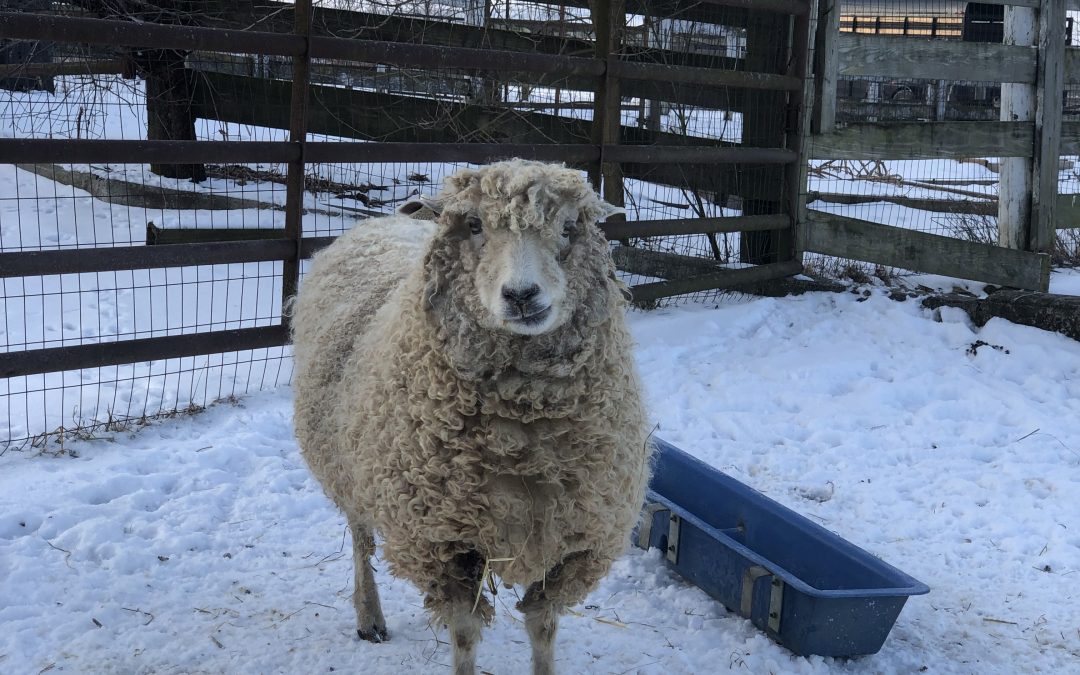February is a time of preparation on the farm.
Our lambs are due to start arriving March 26 so things get “back – mapped” from there. The pregnant ewes have spent most of the winter out with everyone else eating hay and the remaining ‘standing forage’ (grass). However, we will bring them up and separate them from the others towards the end of February. At that point we will begin to supplement their feed with some grain. 70% of the lamb growth occurs during the last month of pregnancy so the ewes need more nutrition. Also, as the lambs get bigger there is less room in their rumen for bulkier forages so the need more concentrated feed.
We also plan for pre-lambing shearing. There are several reasons to shear the sheep before lambing. It makes it easier for lambs to nurse; keeps everyone cleaner; and it is easier to observe what is going on with the ewe. Additionally, a shorn ewe will be more apt to seek shelter with her lamb in bad weather. We also trim feet and update vaccinations at the same time. This provides a time frame for optimal antibodies to develop in the ewe’s colostrum for the lambs.
Snow days provide a good time to go through lambing supplies and order anything we may need. We also order ear tags for the lambs. We try to use different color tags for different years. It makes it easier to tell from a distance which sheep was born which year. Likewise, we tag the ram lambs in the right ear (R = Ram) and the ewe lambs in the left ear. This is also a good time to catch up on the latest research and webinars.
While the garden and hay fields are dormant at this point planning is underway. We begin to order seeds for the garden and make plans for the hay fields – which ones will need to be limed? Overseeded? At the same time, we are keeping a close eye on our own hay supply to be sure we have enough for our animals and if / when we can sell any more to customers.
And the sap starts running in the maple trees. Look for Tom’s hanging buckets as he begins the years maple syrup project.

